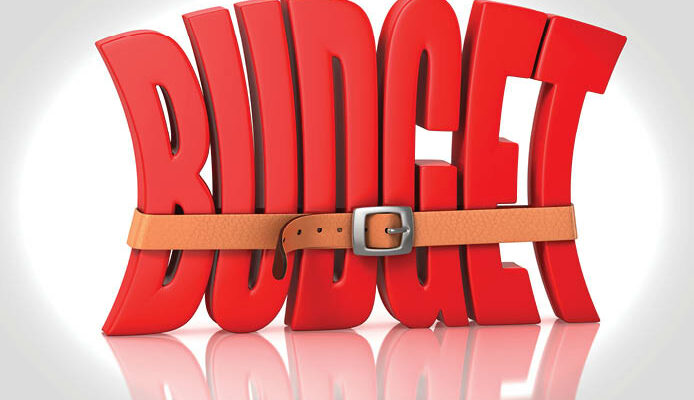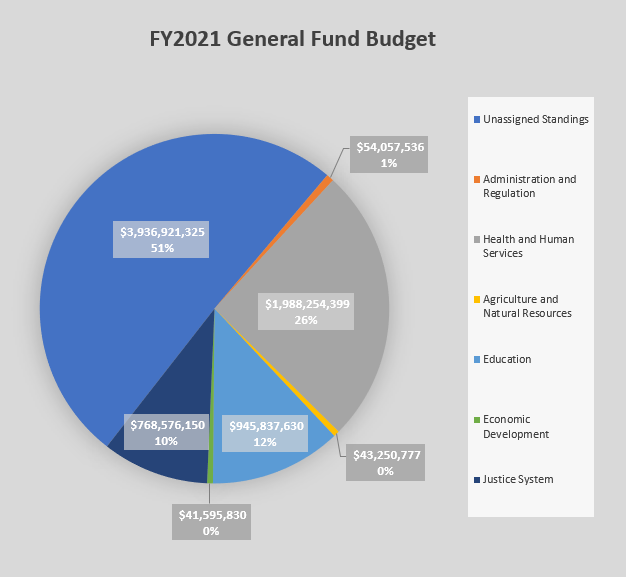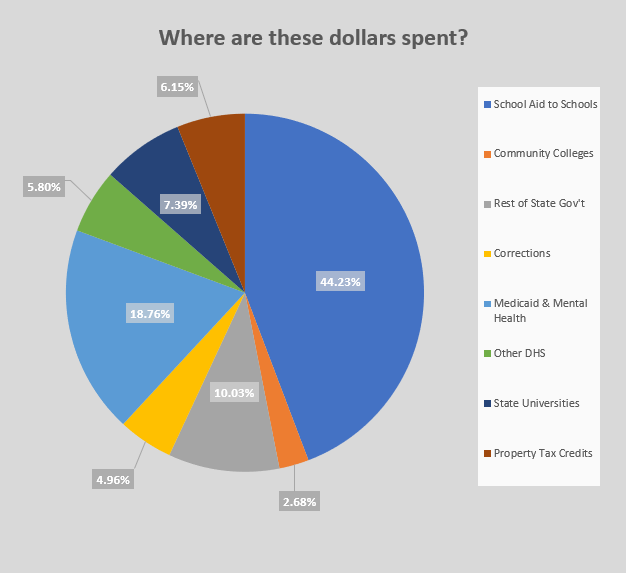
Crafting a state budget is never an easy process and this year was especially difficult with drafting a budget amid the COVID-19 pandemic. Prior to the COVID-19 emergency, Iowa was in a strong economic position with healthy and stable revenue growth. By March, all of this changed as the pandemic triggered an economic downturn and revenue uncertainty. In May, the Revenue Estimating Conference met and lowered the Fiscal Year (FY) 2020 revenue estimate by $149.5 million and the FY 2021 estimate by $360 million. As the legislature reconvened in June, caution governed the budgeting process as policymakers passed a $7.78 billion budget for FY 2021. This is a status quo budget — only slightly higher ($26.6 million) than the $7.75 billion budget for the current fiscal year.
Iowa code mandates a spending limitation of 99 percent of estimated revenues. The $7.78 billion budget spends only 96.7 percent of the estimated revenue, and as Senator Michael Breitbach, chair of the Appropriations Committee, stated the budget will have a $311 million “cushion if revenue does not meet expectations before it would have to dip into cash reserves or the Taxpayer Trust Fund.”
The $7.78 billion FY 2021 General Fund budget consists of funding state administration and agencies, agriculture and natural resources, economic development, education, health and human services, justice system and public safety, and unassigned standings, which a large portion, $3.4 billion, is directed toward public education.

Public education (defined as preK-12, Regent Universities, and community colleges) and Medicaid consume over 78 percent of Iowa’s General Fund budget. In FY 1995, education and Medicaid consumed only 42.7 percent of the General Fund. This is creating a problem as the cost of both education and Medicaid are crowding out other funding priorities.

It is often assumed that education is not “fully funded,” but this is not true. Education is not only one of the main budget drivers, but Iowa’s “total investment in preK-12 education is over $3.4 billion for FY 2021.” Governor Kim Reynolds noted “since 2017, Iowa has invested nearly $13 billion into preK-12 education.” In FY 2021, Medicaid will consume $1.4 billion of General Fund spending. The rapid increase in both education and Medicaid spending should serve as a fiscal “storm warning” for Iowa policymakers.
The legislature also passed a $393.9 million appropriation for the Iowa Department of Transportation and $67.3 million will be appropriated from Iowa’s Rebuild Iowa Infrastructure Fund and Technology Reinvestment Fund that will be distributed to various state agencies and departments. Some of the areas that saw reductions include the Regent Universities, Department of Transportation, the judicial branch, the Secretary of State, among others.
Fortunately, prior to the COVID-19 recession, Iowa’s economy and budget was in a strong position. Iowa had $800 million in reserves and a surplus of nearly $400 million. Prudent budgeting by the Iowa legislature and Governor Kim Reynolds will help cushion the economic impact of the virus. Iowa has also received $2.8 billion (including $1.25 billion from CARES Act) from the federal government in terms of stimulus aid. All of this will lessen the economic impact of COVID-19 on Iowa’s economy.
Governor Kim Reynolds has recently stated how this funding will be used in Iowa. The Governor will save $550 million to support the state’s unemployment trust fund or other COVID-19 related needs, but she intends to spend $700 million on the following:

Although Iowa’s economy is starting to recover the economic uncertainty due to COVID-19 remains. Depending on economic conditions and revenues, policymakers may need to make budget adjustments. Nevertheless, if policymakers continue to slow the growth of spending this will not only aid in the recovery, but also help to avoid any painful spending reductions if revenues decline. Iowa’s budget also reflects the need to consider reforming education and Medicaid, which continue to overcrowd other priorities, especially the justice system and public safety. It also increases the difficulty of implementing much needed tax rate reduction.
A budget must not only reflect the priorities of Iowa, but also be respectful of taxpayers. At this time, the best policy prescription for Iowa should be based on practicing fiscal prudence by adhering to conservative revenue estimates, conservative budgets, and avoiding tax increases. The FY 2021 budget meets these objectives.
